What happens if we completely eliminate the limiter by further increasing the resolution? Both cards also work at almost identical levels, with the Radeon RX 580 8GB having its nose wafer-thin ahead of the GeForce GTX 1060 6GB. What is extremely striking, however, is the rapid increase in processor load on the GeForce
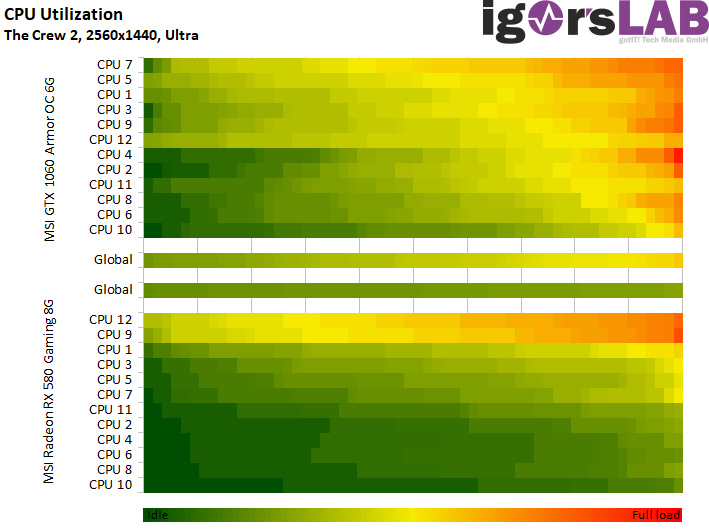
Now let's look at the history with the timeline again and we can see very well that the processor load at the GeForce has now increased extremely, in places even to double!
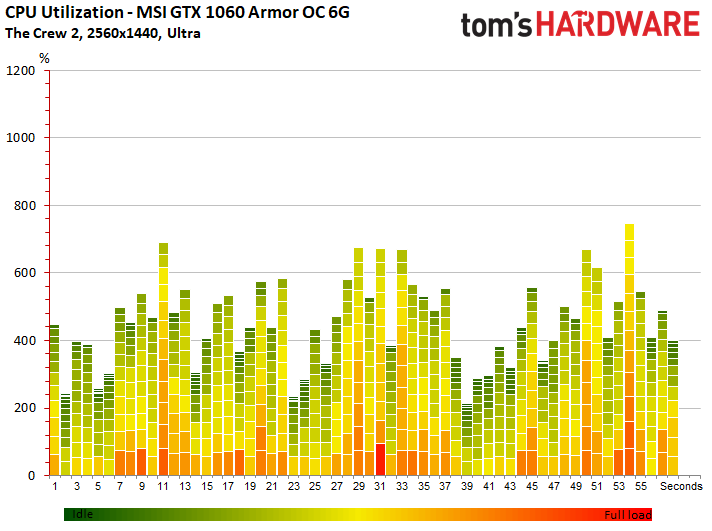
The load on the RX 580, on the other hand, has only increased slightly and is hardly higher at the top than in Full HD! Nevertheless, performance fits again here.
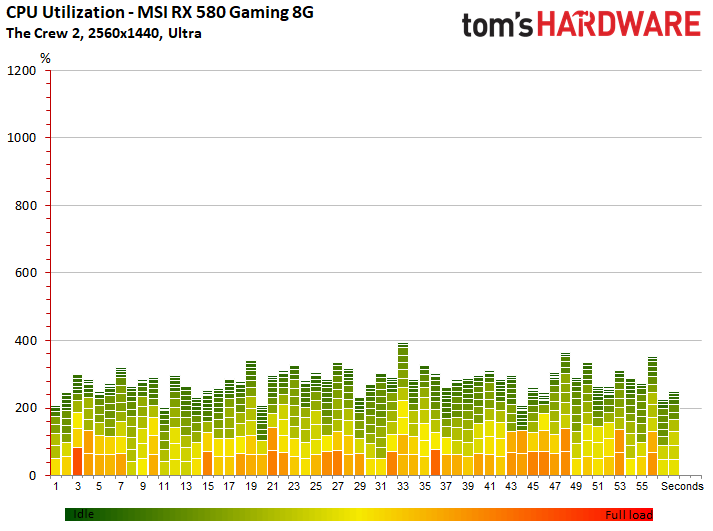
What is somewhat astounding, however, is the now much higher clock speed over the cores as a result of the higher processor load. Nevertheless, with up to twice the CPU load, you can't convert this into real graphics performance.
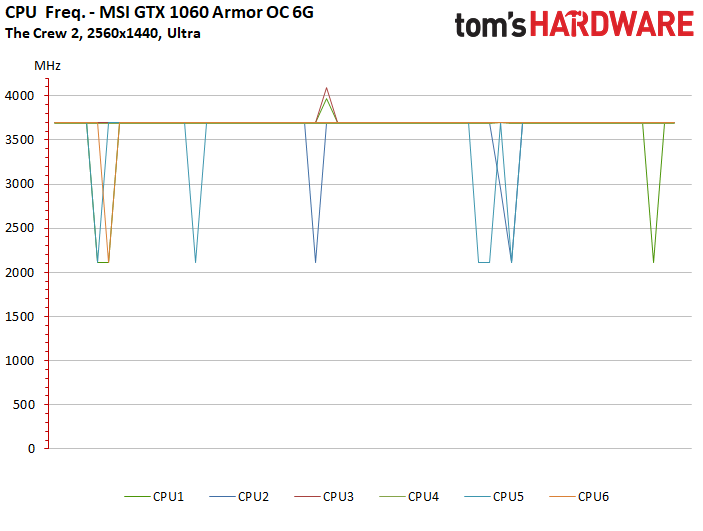
The clock curve at the Radeon looks much more "hibbeliger", which suggests stronger changes between full load and low load phases.
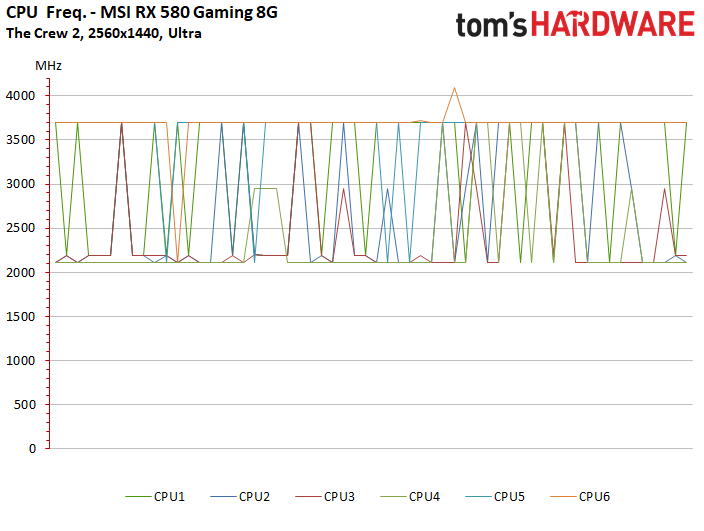
With the video memory it is again almost 250 MB, which the Radeon can use more.
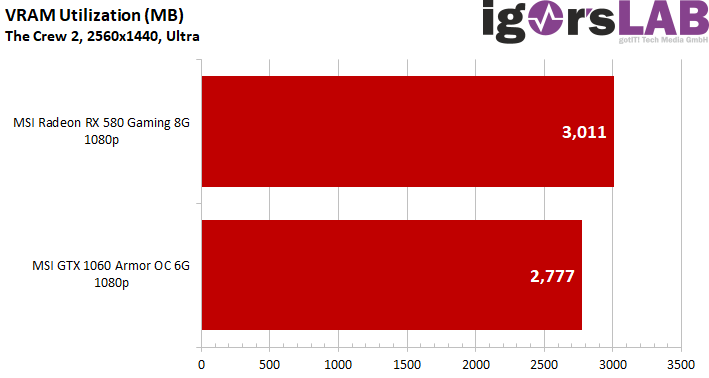
The Geforce, on the other hand, again requires the memory of the system. This time it is almost 300 MB more than the Radeon grabs.
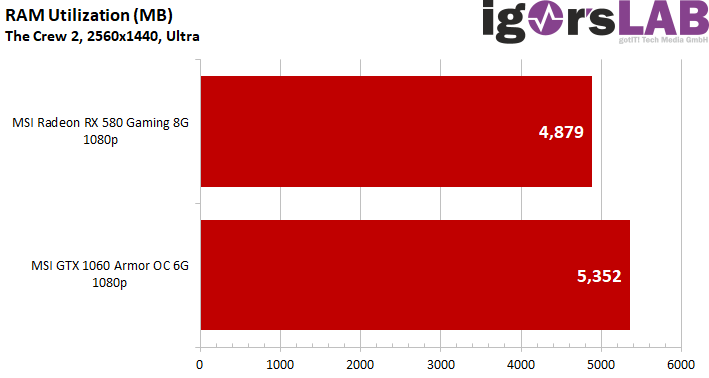
The bottom line is that the tests of both settings suggest that the GeForce GTX 1060 generates more processor load whenever it is not artificially slowed down by a software limiter. With the limiter brake, both cards hold roughly the balance.
- 1 - Einführung und Testsystem
- 2 - Gaming-Performance in FHD mit 1920 x 1080 Pixeln
- 3 - Gaming-Performance in WQHD mit 2560 x 1440 Pixeln
- 4 - Gaming-Performance in UHD mit 3840 x 2160 Pixeln
- 5 - Skalierung über Kerne und Threads
- 6 - CPU-Auslastung, Grafik- und Arbeitsspeicherbelegung in Full-HD (1080p)
- 7 - CPU-Auslastung, Grafik- und Arbeitsspeicherbelegung in WQHD (1440p)
- 8 - Zusammenfassung und Fazit
































